In a thriving and competitive market, now more than ever, businesses need to support their customers and tailor the experience to meet their ever-changing needs and demands.
The best way to do this is to develop a customer experience strategy.
The customer experience (CX) refers to customers’ holistic perception of how they experience your brand or business. It’s the result of every single interaction a customer has with your company.
The ultimate goal is to create an entirely seamless, great customer experience at all points of interaction, from the email sequences you send, to the way you greet people at your brick-and-mortar store, ensuring that customers’ interactions are both positive and meaningful.
When a company does that, when the customer experience is completely coherent, it’s no coincidence. There’s a lot of work that goes into designing an experience that’s 100% intentional and customer-centric. But it’s definitely worth it: 86% of buyers say they’re willing to pay more for a great customer experience.
There are myriad benefits of offering a great customer experience, so if you want to drive business growth and revenue, start focusing on building your customer experience strategy.
Table of contents:
- Customer Experience vs. Customer Service
- Why Is Customer Experience Important
- What Is a Good Customer Experience?
- How to Build a Customer Experience Strategy
- Tips to Measure the Customer Experience
- Tips to Optimize the Customer Experience
- Infographic
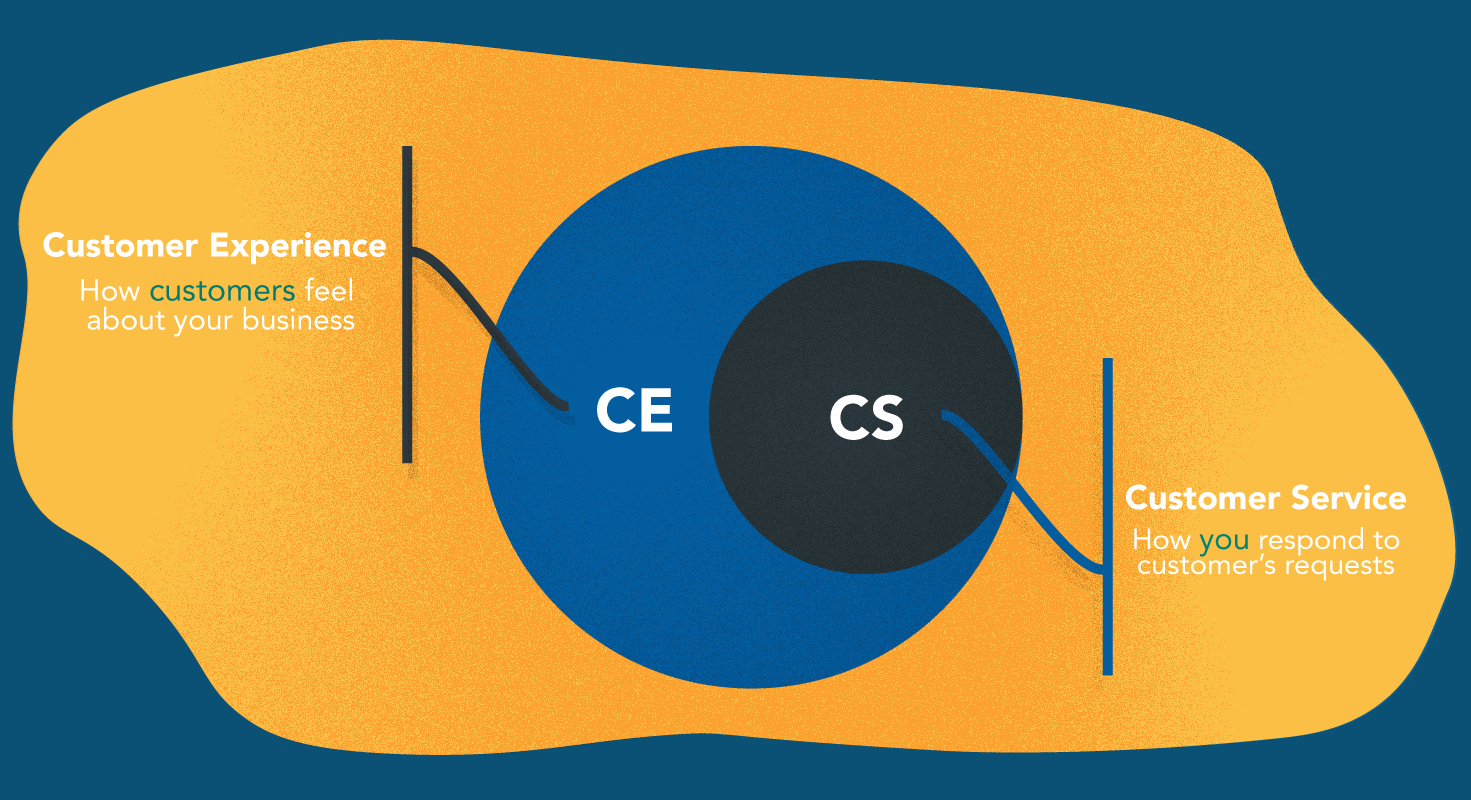
Customer Experience vs. Customer Service
Customer service can be easily confused with customer experience, but they’re actually different. While they both refer to how we treat our customers, a few critical nuances are worth pointing out.
Customer service is a narrow concept, referring primarily to a set of scenarios where customers specifically reach out to talk to someone because they have a question or need help. They might call to ask for a refund or email to inquire about a product. Brands often have a department focused entirely on this area. There are specific roles, like customer service assistant or supervisor, who endeavor to keep people happy and satisfied.
In contrast, customer experience management is a more holistic approach. It concerns all the departments of a company that are working to provide customers with a stellar experience. This includes customer service in general and extends to social media, TV ads, in-store treatment — all touchpoints with the customers.
You could say that customer service is a part of customer experience management.
The customer experience refers to every single interaction a customer has with your business, from using the website to making a purchase, receiving the product, and everything in-between.
These interactions impact how customers perceive your business, ultimately determining whether or not they stick around. Obviously, the better the overall customer experience, the better it is for your business.
Why Is Customer Experience Important
In 2021, customer experience management is emerging as a strong brand differentiator instead of price and product, so if you’re not paying attention to this, your business goals may suffer.
Most companies would surely agree that putting customers first is always good for business, and that’s where customer experience comes in. After all, customers today are more demanding than ever and have very high expectations. If you don’t meet them, you can lose them.
Data shows that 68% of customers expect brands to show empathy, and 66% expect them to understand their unique needs and expectations. Compared to 4% in 2013, a whopping 52% of customers in 2020 expect offers always to be personalized.
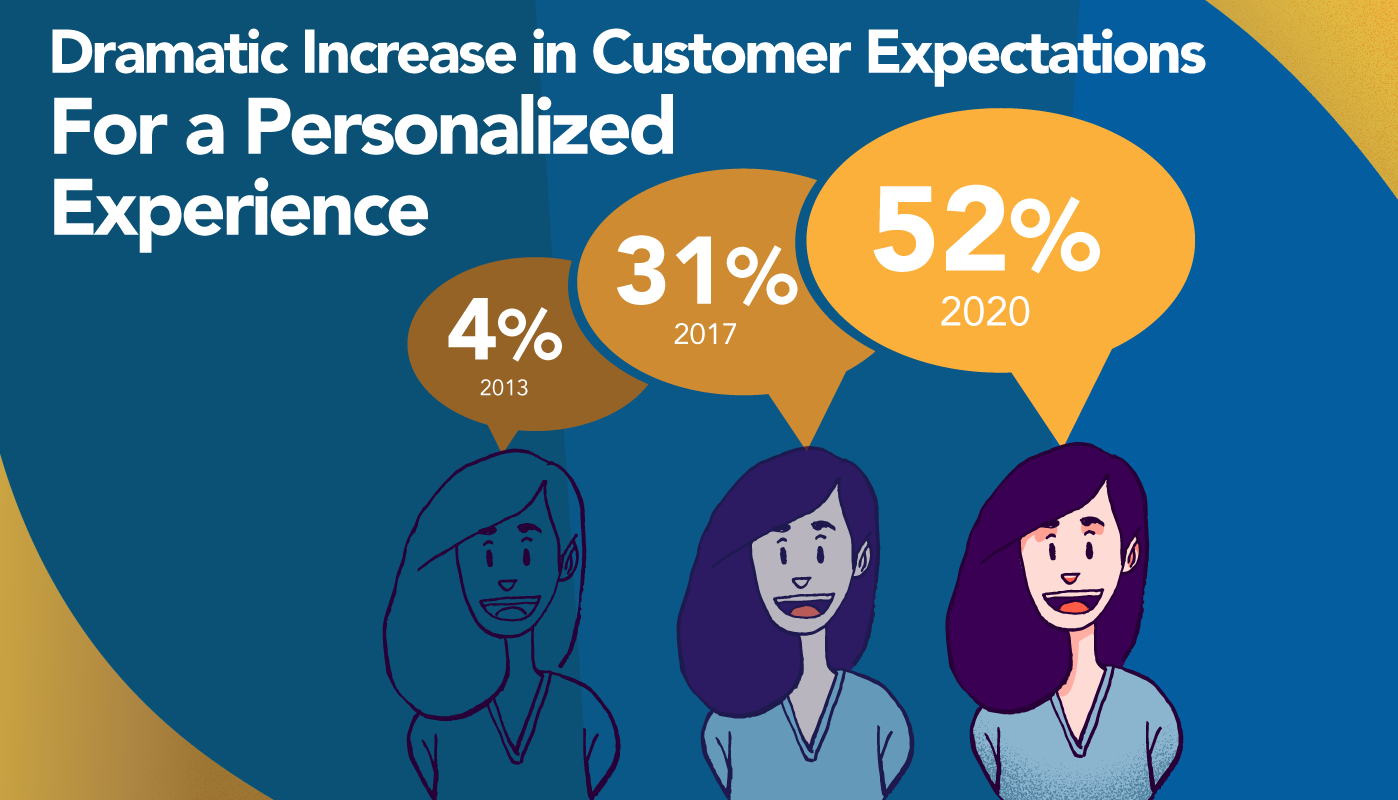
Wondering how you can meet all of these expectations?
You can, with a flawless customer experience strategy.
If you think about it, CX is a potent tool for making your business stand out in a crowded marketplace.
When customers choose a product, they might compare yours to the competition’s, and they may look at variety, color, and price, among other factors. You may or may not surpass your rivals in these areas, but these days, it will boil down to who offers a more stellar customer experience.
Setting yourself apart in CX will give you the opportunity to develop solid, long-lasting relationships with your customers. When customers have a positive experience with you, it can boost customer satisfaction. This strong relationship nurtures customer loyalty and they keep coming back for more.
Moreover, they become your strong advocates and send new customers your way. You can get more referrals, recommendations, and positive reviews and the number of complaints and product returns goes down.
Depending on your earnings and your industry, customer success can open the door to more profits, even doubling your revenue.
Ultimately, stellar customer experience can reduce the customer churn rate — If people are happy, they’ve no reason to leave — which directly improves your bottom line. Data shows that just a 5% increase in customer retention can increase profits by 25% to 95%.
Investing in your customer experience strategy can also increase your average customer lifetime value. The better you treat your customers and give them exactly what they want and need, the more likely it is that they’ll stick around for longer, providing value for your business over time.
What Is a Good Customer Experience?
We all know what a good customer experience is about. You’ve been shopping before, right? You know how you like to be treated. You like brands that go the extra mile to make — and keep — you happy.
Although every industry and business is different and only you truly know how to keep your customers satisfied, some specific universal strategies ensure a good customer experience. This includes:
- Providing an omnichannel experience
- Being proactive and polite at all times
- Providing human interaction
- Solving your customers’ problems in real-time
- Implementing a system to collect customer feedback, analyze it, and act on it
- Going above and beyond whenever you can
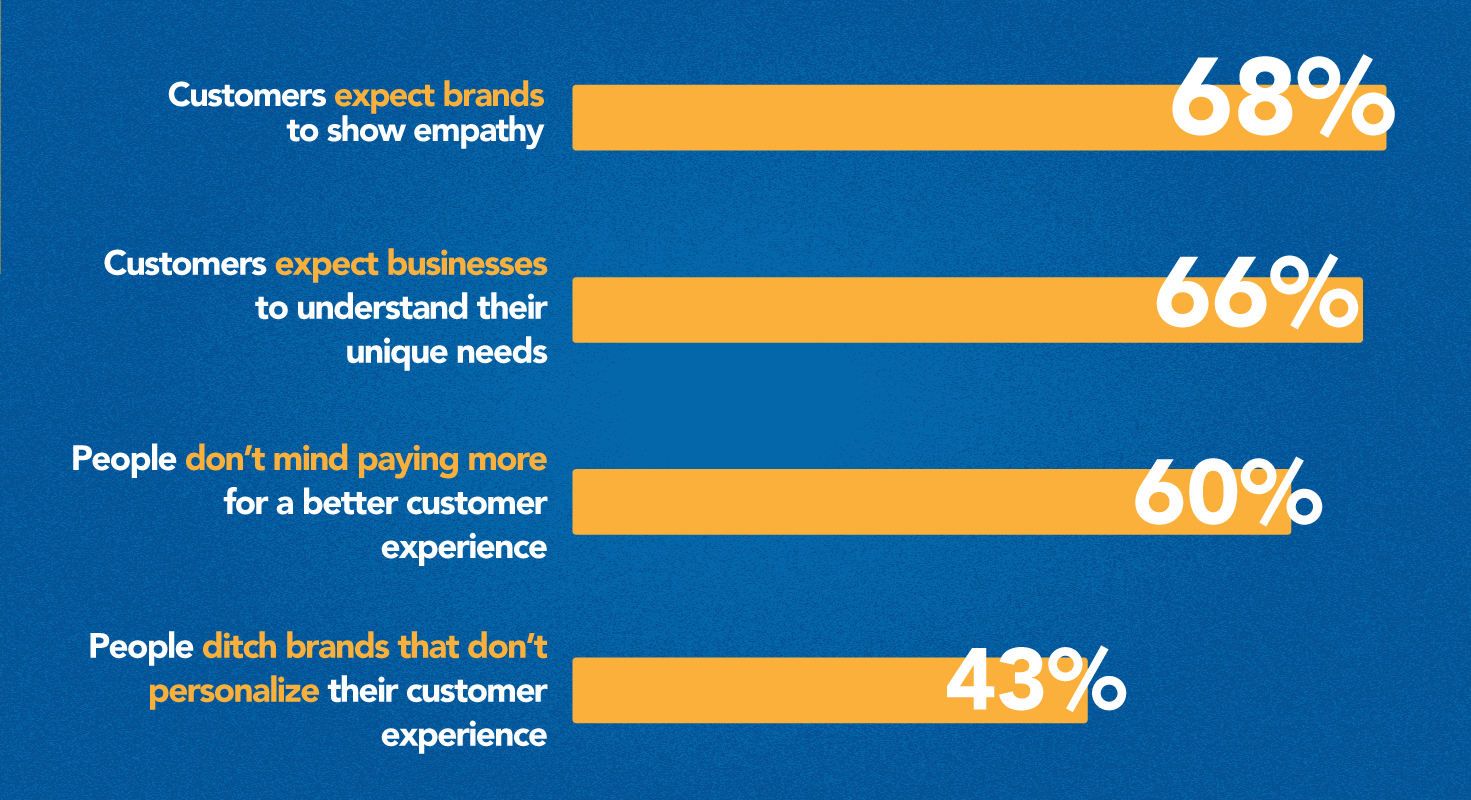
As important as it is to know what to do, it’s also important to know what not to do. What is it that customers detest the most? What will make them run to the competitors? What are their deal breakers?
The top complaints from customers when providing feedback on their bad experience shows that they strongly dislike the following:
- Waiting for long periods at the contact center
- Interacting with employees who clearly don’t understand customers’ needs
- Issues, problems or questions that don’t get resolved
- Excessive automation and not enough human contact
- Service that isn’t personalized
- Employees who are angry or rude
It’s worth noting, though, that the issues and complaints your customers have will be unique to your business and industry. Like we said earlier, the best way to identify those issues is to ask for customer feedback and really, truly listen to it.
How to Build a Customer Experience Strategy
Are you ready to start building a customer experience strategy? To do it, you’ll need an unwavering commitment from the entire company, not to mention a comprehensive plan that ensures every employee is on the same page regarding the customer experience.
When you get it right, you’ll be able to turn one-time shoppers into repeat buyers and, ultimately, long-lasting customers.
Craft Buyer Personas
If you’re going to serve your customers to the absolute best of your abilities, you have to really understand them. Like, really understand them. You need to discover what they’re looking for, what their specific problems are, what would truly satisfy them, what motivates them, and what they value.
To do this, a good first step is to develop buyer personas, which are fictional characters that represent potential customers. These personas should embody the traits and characteristics of your most valuable customer segments.
Every persona should have an image and clearly stated needs, pain points, quotes, motivations, attributes and a demographic profile. The data to create them should come from customer interactions and interviews.
When you have a deeper grasp of who your customers are and what they’re about, then you can develop empathy for them, understand their profile and connect with them.
Another advantage of creating buyer personas is that it will allow you to personalize your marketing to exactly what people want. There’s an upward trend of people ditching brands that do a poor job of personalizing the customer experience — 43%, up from 25% in 2019.
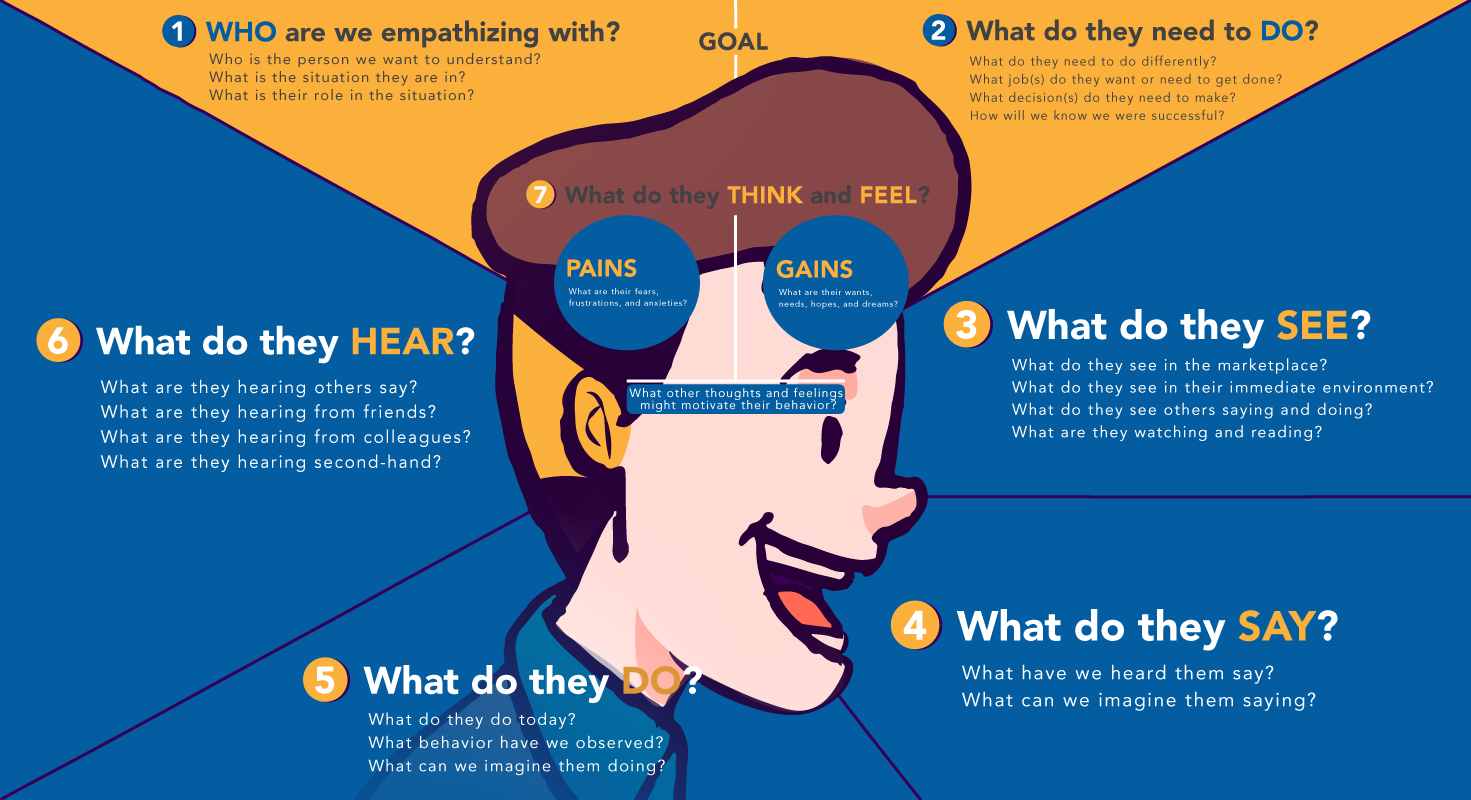
Empathy Mapping
You can take it one step further and elaborate on your buyer personas by creating an empathy map. This tool really lets you get inside your buyers’ heads and perceive their internal and external world from their point of view.
Empathy mapping looks at two broad components:
- Internal Mindset: It focuses on what the audience feels and thinks about its goals, aspirations, and pains.
- External World: It focuses on what the audience hears, sees, says, or does i.e., how it interacts with the outside world.
Once you understand where your customers stand, you will be able to empathize with them better, and consequently, serve them better.
Create a Customer Experience Map
A customer experience map is an extremely valuable tool that can help your business not only refine the entire experience but also identify where your company falls short, what its strengths are, and where opportunities lie.
Creating a map requires that you mine and aggregate a ton of data from a wide range of sources to find actionable items that help you understand the experience from the customers’ perspective.
It requires you to look at the entire customer journey map and consider every single channel and variable. As you need to take a holistic view, it requires that you work with employees from all departments to ensure that you capture every single perspective and angle.
Sounds daunting? Maybe a little. That’s why we’ve divided the entire process into simple actionable steps. So, let’s take a look at what’s involved.
1. Gather Data and Feedback
The first thing you’ll need to do to get started is to spend time gathering data and feedback from your customers and employees. You need to look at all of your customer touchpoints, where interactions take place with your customers. These can be phone calls, digital advertising, brick-and-mortar stores, social media, the website, invoices and receipts, and other traditional advertising channels.
There’s no shortage of places from where you can mine data.
- Blog comments
- Surveys
- Social media comments
- Forums
- Web analytics
- Online reviews
- Testimonials
- Customer support emails and chats
- Interviews
- Analytics from call centers
2. Map Your Customer Goals to Touchpoints
The next step is to map your customers’ goals to touchpoints at various stages of the buyer’s journey. , which involves determining the purpose of every single interaction. To do this, it helps to identify the different types of interactions that potential customers and actual customers can have with your company.
This is where the 5 A’s of the modern customer journey comes into play. They refer to the main interactions of the customer lifecycle. They are:
- Aware – How do customers become attracted to you and informed about your product or service? It might be through ads, referrals, or their own research. Regardless, this is the first impression a customer has of your brand. If this is positive, they move onto the next phase.
- Appeal – If the “awareness” portion of the journey is positive, the prospect advances to this stage, as they’re interested in learning more about the brand’s products or services.
- Ask – At this point, the brand generates curiosity and the prospect wants to learn more about its product or service. They might look at reviews, visit a store, check out the website or look at the company’s social media.
- Act – If the brand is what it appears to be, the prospect will purchase and become a customer.
- Advocate – The customer will check to see if the product lives up to the expectation and decide how the after-sales service is if the product has shortcomings. If the customer is pleased with the experience, he or she will become an advocate for the brand or product, sharing positive reviews and potentially bringing in new customers.
3. Align Touchpoints to Stages In Customer Journey
Next, you need to organize your touchpoints by phases in the customer journey. As shoppers pass through different stages in the sales funnel, you should be able to identify the interaction points for each phase.
A typical buyer’s journey starts with the awareness stage followed by consideration, evaluation, decision, and then the post-purchase experience.
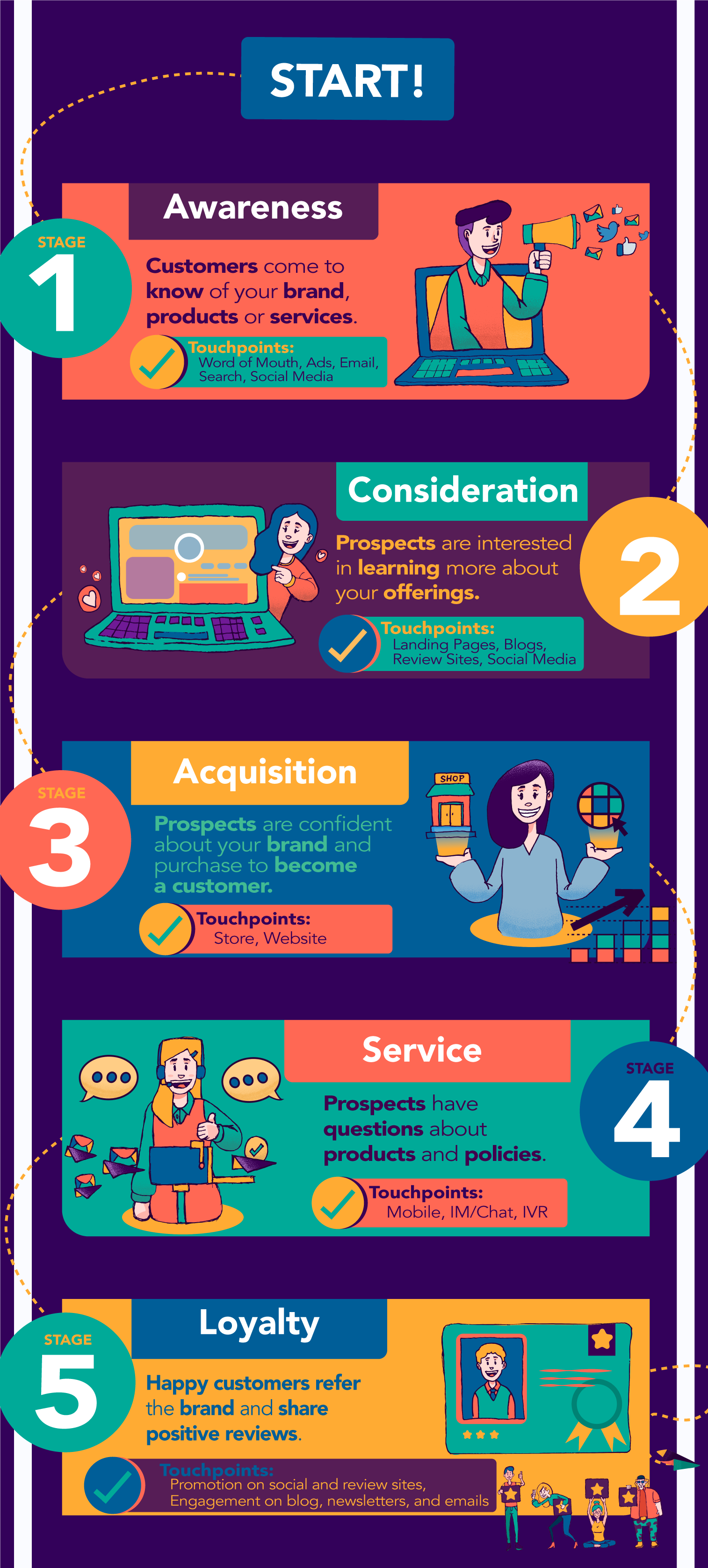
4. Assign a Purpose and Owner to Each Touchpoint
Once you’ve mapped all the touchpoints, you also want to identify the reason these touchpoints exist and establish ownership of them. For example, many companies use Twitter for customer service, Instagram to raise awareness about their brand, email campaigns to promote special offers, and some overlap.
You need to consider the following questions and answer them from your customers’ perspectives.
- What do they do for your business?
- How do they help your customer?
- What is their impact?
- How effective are they?
- Do they align with your customer’s needs?
- Do they promote upselling or repeat purchases?
- Do they build customer loyalty?
- Do they help you stand out from the competition?
Now figure out who should be responsible for each customer touchpoint. Once we know the reason for a touchpoint, we can identify the person, team, or department responsible for managing the customer’s needs at that touchpoint.
5. Create Your Customer Experience Map
After you’ve gathered all the information and research available, the next step is to convert it into actionable, digestible, and informative insight. The most common layouts for your customer experience map are vertical or horizontal timelines or wheels (to show a repeating cycle).
There’s a wide range of content you can use on your map. You’ll most likely want to include:
- Touchpoints
- Users’ needs
- Opportunities
- Service barriers
- Customers’ emotions and thoughts
- Customers’ attitudes, mood, and motivation
- The problem your customers are looking to solve
- Actions from the consumers’ perspective
The more information your map includes the more complex its design. Here is an example of a simple customer experience map.
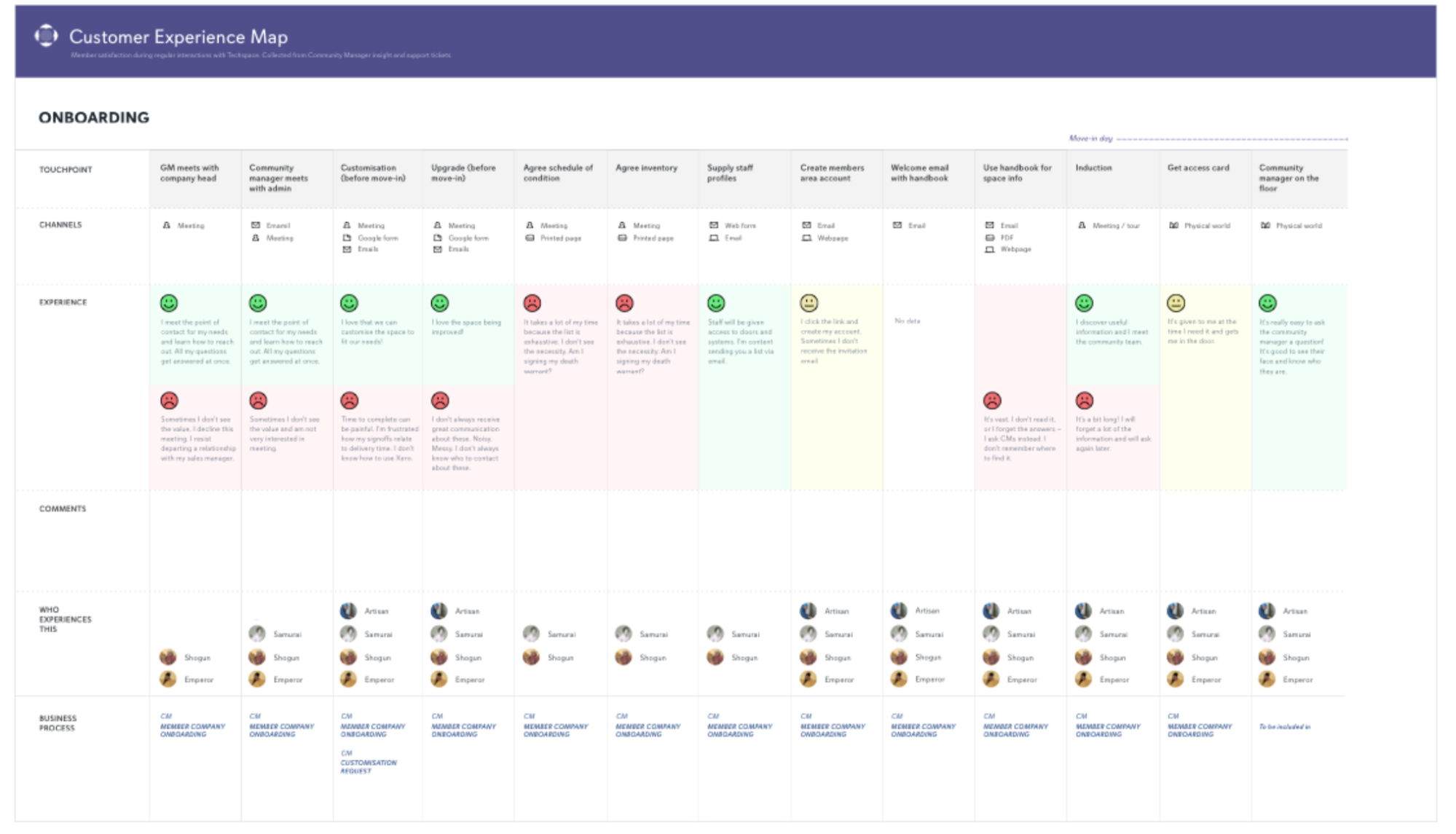
Source: Camille Brunette
Here’s another example of a complex customer experience map!
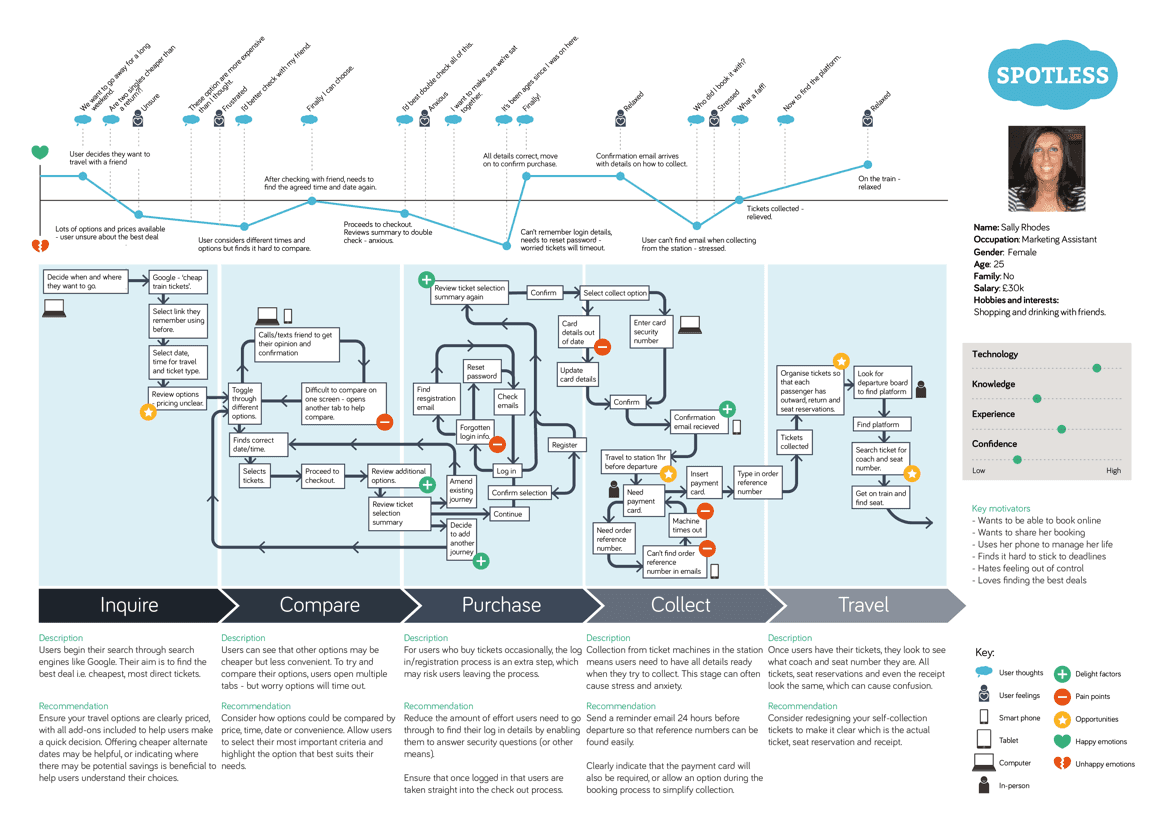
Source: Spotless.co.uk
Develop a Solid Customer Experience Team
Providing a great CX will require the participation of everyone at your company, regardless of whether or not they are directly customer-facing. Everyone needs to be on board and know his or her role for the CX strategy to be effective.
Moreover, when you combine every member’s knowledge, experience, skills and influence, your team becomes stronger and more effective. That being said, you need to make sure your people are engaged, skilled, and empathetic.
There are a few points to keep in mind here.
- Excellent Communication Is Key: Teach your team members essential skills like how to show empathy, how to be patient, and how to build trust. Encourage the use of positive expressions so that customers can trust their issues will be resolved in a timely manner. Interactions with customers will be positive if they have clear communication guidelines to follow.
- Product and Service Training Is Essential: Employees need to know the products and services inside and out. They need to be aware of upgrades, changes, and issues as they arise. Provide them with a regularly updated knowledge base, so they’re always in the loop. Make sure they know it’s okay to say, “I don’t know.” Customers appreciate honesty if they know you’ll do everything you can to find them the answer.
- It’s Important to Have Thick Skin: Angry people will get in touch to provide negative feedback. The team needs to be able to set its ego aside and look at customer feedback objectively. Customer satisfaction is the most important and it’s crucial to keep that in mind.
- Work Ethic Is Critical: Customers want to be served by someone who will see their problem through to the end, no matter how complex it is and however long it takes, as long as you keep them in the loop.
It’s worth noting here that, to keep your customers happy, you also have to keep your employees happy. Engaged employees are more likely to offer good customer support and disengaged ones, who are less invested in their jobs, are likely to take a pass on it.
Use Tools to Enhance the Experience
When it comes to developing a better customer experience, you need to have the right tools. Companies should strive to add both traditional and digital tools with a single end goal: keeping customers happy.
This includes investing in tools that:
- Allow for proactive communication with customers
- Encourage customers to interact more with your brand
- Let you respond to customers in a timely manner
- Manage customer complaints quickly and effectively
- Monitor customer behavior
If you’re going to fulfill customer expectations, it’s time to take the customer experience up a notch… or several. Below is a selection of great tools you can add to your arsenal if you haven’t already.
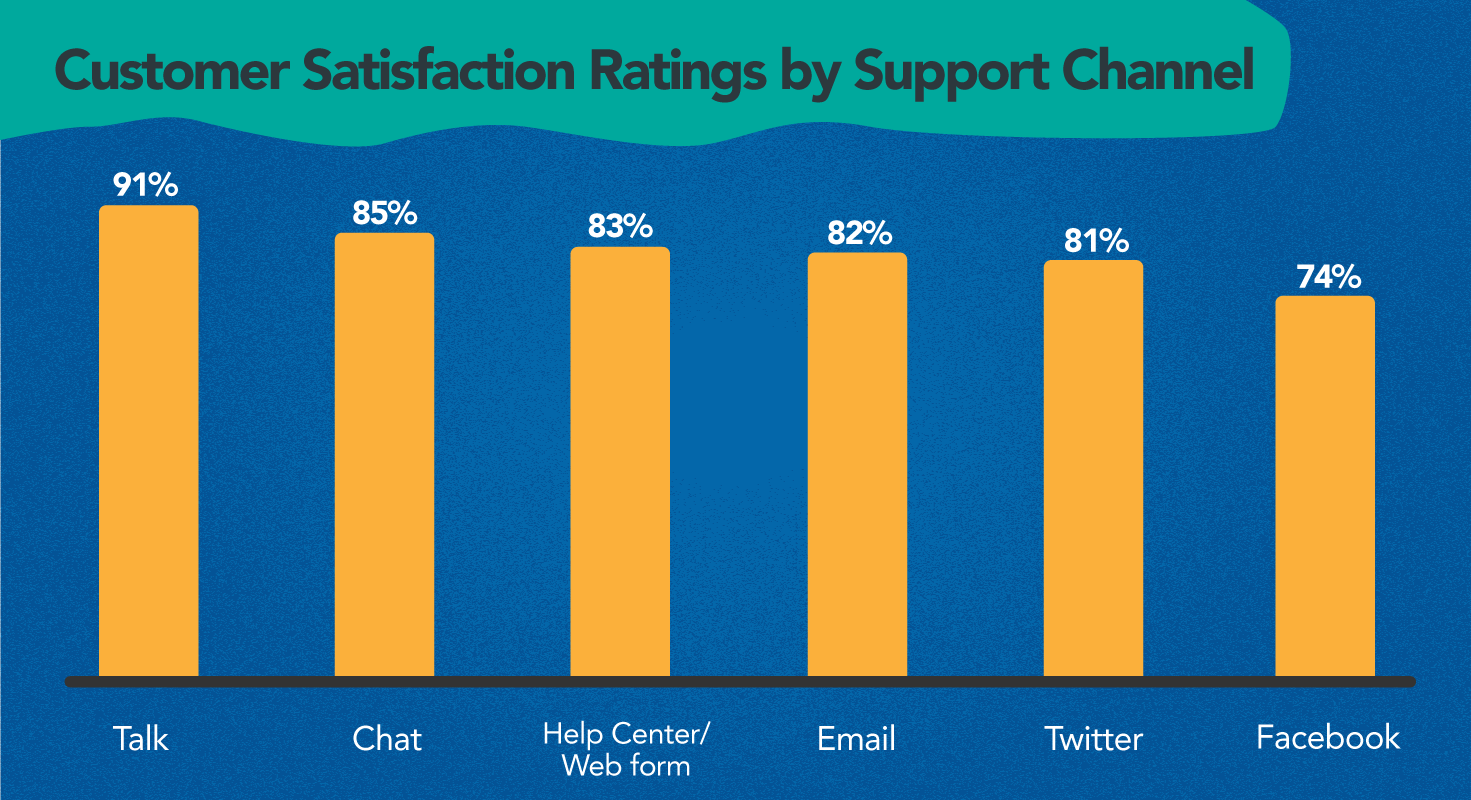
Start Using an AI Chatbot
The best way to support your customers is with a 24/7 live chat, which has the second-highest customer satisfaction ratings at 85%. These types of interactions allow you to resolve all of their sales and support queries immediately, often in real-time, which will ultimately improve customer satisfaction and set you apart from the competition. Personalized customer engagement should always be one of your end goals.
That being said, sometimes, this level of support just isn’t realistic. The best alternative would be an artificial intelligence-powered chatbot. Regular chatbots can feel robotic and automated, but these innovative ones will give your people a more human experience. Chatbots are currently the fastest-growing brand communication channel (92% increase in usage since 2019).
Leverage the Potential of Customer Surveys
If you’re not already following up with your customers, stop what you’re doing right now and set this up. Customer surveys offer a wealth of information if you know how to do it right.
With surveys, you can find out exactly what customers loved about their experience with your brand or what ticked them off enough to complain. When you have all that information, do something with it.
And don’t be content with online surveys only — get your customers on the phone if necessary. Oftentimes, the topics they truly want to talk about are not in your surveys, so this lets you have a little one-on-one time with them.
Develop a Mobile App
Companies are always looking for ways to connect with their customer base and developing a mobile app will give you yet another option.
A dedicated app can be a great way to streamline the customer experience and it can even let you incentivize shopping. Stores like Target are encouraging people to use their phones while in the store by offering discounts and coupons for app users. Similarly, restaurants are offering app users free drinks and coupon codes.
As more and more people use their mobile phones to shop, letting your customers do it on an expertly designed app rather than on your mobile-optimized website could be a game-changer. Since roughly 8 out of 10 Americans are now online shoppers, if you don’t have a mobile app, you’re clearly missing out.
Go One Step Further With Social Listening
Social media is an excellent resource for companies that know how to leverage its potential. That’s where social listening comes in. It gives you access to online conversations about your company, brand, products, and services even when you’re not tagged in them. It gives companies valuable insight into how their customers feel about them, what they think, and what they need.
Social listening has a plethora of benefits, including:
- Letting management in on what’s trending
- Showing management how to improve experiences
- Allowing you to discover new sales and leads
- Helping you identify pain points
- Making it easier to track competitors
- Providing a way to manage crises
- Enabling you to identify advocates
- Supporting engagement with customers
These insights also allow brands to analyze, track and respond to conversations about them. It’s a vital part of audience research.
Social listening should not be confused with social media monitoring. The latter looks at the number of mentions and engagement rates, while the former is looking at the mood behind the data and lets you know how people truly feel about you and your brand. When you understand this, you can organize your marketing efforts better.
There are many tools out there that you can use for this purpose, such as Hubspot, Social Sprout, Falcon.io, and Buffer.
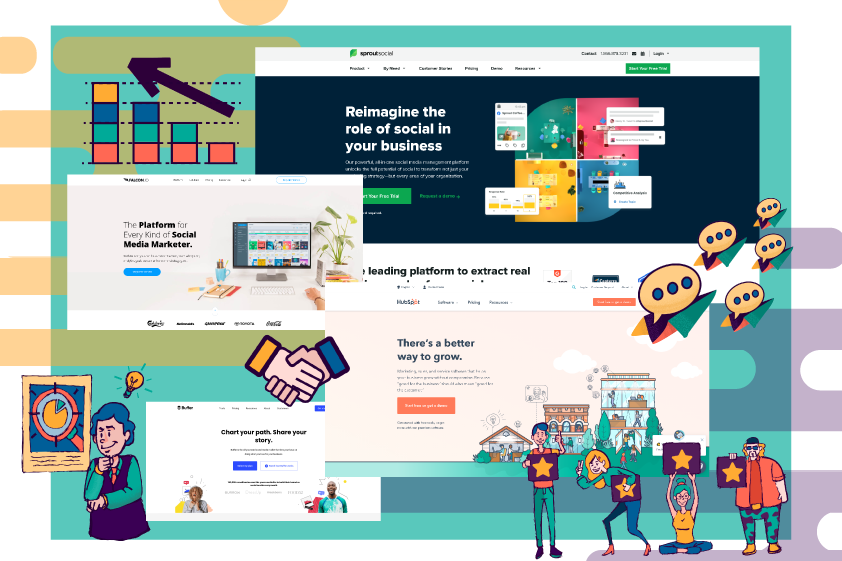
Analyze the Customer Experience
When analyzing the experience, you’ll want to look at both macro and micro-level issues that impact your processes, products, policies and company mindset.
Regarding the macro-level, you’ll want to look at the big picture and figure out where your customers come across problems in the customer journey. It’s important here to do a bit of segmentation and focus on the feedback of your most important buyers because they’re the people you’ll want to keep happy. You may want to ignore the feedback from that customer segment that you will never be able to please no matter what you do.
You’ll also want to ask yourself if it’s a minor issue or does it keep people from converting. Moreover, does it affect many people, or is it not very common or widespread.
On a micro-level, when someone makes a complaint, have a manager or supervisor reach out to them and make things right. Then, look for the source of the failure: if it was an employee, focus on training. If it’s a company policy, the manager can discuss with executives and stakeholders to make necessary changes.
Tips to Measure the Customer Experience
You will need to measure your metrics to see what’s working. All those analytics only have value if you can understand them and use them to enhance the customer experience.
Additionally, if you’re going to distinguish yourself from the competition, you need to understand not only how well your business is doing but also your customers’ perception of your company, services, and products.
As for standard metrics, every company should be measuring and tracking the following:
- Customer Effort Score: This assesses the customers’ experience with your services and products. Ease of experience can also be measured by asking customers to rate it on a scale of 5 points, from very difficult to very easy.
- Visitor Intent: This measures the reason customers visit a business website. It can help companies optimize their websites to give customers exactly what they’re looking for. Customers are given several options in a survey format and they choose the one that aligns with the main purpose of their visit. This metric goes beyond the usual, how long people spend on a website, to better understand the reason for their visit.
- Cart Abandonment Rate: People who love your brand and products do not leave their carts behind. When you track the number of customers who fill their carts but don’t go through with the purchase, you’ll know that something is wrong with the online customer experience. Then you can work on improving their experience on both the web and on mobile.
- Employee Satisfaction: Employee satisfaction is a vital part of ensuring a positive customer experience. Ask your employees if they’re happy — have them rate their experience or find other ways to gauge their satisfaction. Those who are more satisfied generally provide better customer service.
- Net Promoter Score (NPS): This metric looks at customer experience and helps you understand if your customers are likely to recommend you to family and friends.
- Customer Satisfaction Score: This involves survey questions that ask customers if they’re happy with your service or product. It allows you to understand better what your customers think of you.
- Average Time Resolution: How long does it take to resolve customer problems? This metric measures the total time it takes to resolve an issue from the moment a customer brings it up through to resolution. Find the average by dividing the sum of all resolution times by the number of cases solved in a specific period.
- Customer Loyalty: As you want to develop advocates for your brand, this metric is very important. Track it by measuring how often people return after their first purchase to make subsequent purchases instead of switching over to the competition.
- Sentiment: Sentiment analysis usually uses machine learning to understand how people feel about your brand according to what they post on social media. This can help brands with a great reputation maintain their customers’ affection, and those who are struggling to win over their customers can get a better idea of why they’re in that position.
Other important metrics you should measure include churn rate, retention rate, and customer lifetime value.
While some parameters are standard across all industries and companies, many businesses develop their own KPIs to help them understand the different aspects specific to them.

Tips to Optimize the Customer Experience
Optimizing the customer experience will allow you to attract more customers, engage them better and improve their journey when they visit your website. Ultimately, it will help you maintain and enhance your brand’s image in the marketplace.
For a stellar customer experience, you’ve got to offer them an environment that is worthy of their time and meets their expectations. Satisfied visitors and customers will engage more, spend more and show more brand loyalty.
With that in mind, let’s look at the different ways we can measure and optimize that experience.
Make Sure Your Company Culture Is Customer-Centric
If you want to optimize the customer experience, make sure your customers are the main attraction and treat them the way you’d like to be treated.
For this philosophy to extend throughout the company, it has to start at the top and trickle down to the rest of the employees.
- It’s imperative that a company’s leading executives and leadership in general model this customer-centric approach.
- New hires need to understand this approach from day one and every employee, new and old, needs to know that they can impact the customer experience.
- Employees will need ongoing reminders and training on the importance of the customer experience as a core focus of the business.
Remove Friction from Business Interactions
If you can reduce customer frustration down to zero, you’ll be creating a great experience that will keep people coming back for more. Create a seamless, human experience and your customers will remain loyal to you.
This involves the following:
- Get your team to listen and connect with visitors’ emotional states.
- Speak to them in their language by re-using your customers’ actual words for truly authentic interactions.
- Perhaps most importantly, don’t make people wait. Make sure the customer support team is dedicated to solving their problems — ship their products quickly, keep them in the loop and offer a quick and easy return policy.
Offer an Omnichannel Experience
Support your customers on a wide variety of platforms via email, telephone, and chat. Having an omnichannel CX strategy will ensure that your message is consistent across all digital platforms and can help boost your brand awareness. Customers will have the same experience wherever they go, which will ultimately be positive.
Not only do customers who interact with companies on four or more channels spend 9% more on average, but customer retention rates are 90% higher for omnichannel vs. single-channel customers.
Improve, Improve, and Improve Some More
There’s always scope for improvement, even when you have a solid customer experience strategy in place.
- Start with your website, which is the first point of contact between you and your audience. Evaluate your design layout, landing page design, calls to action, site speed, page load, and forms. Then reevaluate them.
- If you have a mobile app, you want to make sure you develop high-performing APIs that work as fast as possible and that you’ve optimized their functionality. It must have a clean, neat design with an uncluttered UI and visual consistency. It has to have a very fast load speed, in-app form functionality and compelling and engaging content.
- How about your messaging? Are you using the right channels for the right customers? Does the conversation flow both ways? Is it automated but also humanized? Do your messages have visual consistency? Do all interactive elements work the same? Asking yourself the right questions will help you elevate the experience for your customers.
Customer experience is an increasingly important area that businesses absolutely need to spend time and money improving, tweaking and perfecting. A stellar customer experience gives you a competitive advantage over others and also has the power to increase customer retention, loyalty, customer lifetime value, and profit.
A customer experience strategy has many moving parts and will need to be crafted carefully and implemented over time after collecting and analyzing the correct data. However, it’s clear that those companies with a mature customer-centric philosophy and memorable, human experiences indubitably see the best results in the long term.
Infographic







![What is Omnichannel Customer Service? [Benefits & Tips] What is Omnichannel Customer Service? [Benefits & Tips]](images/omni-channel-explained-350x203.png)

